How Elizabeth St. Became National Ave.
Its name was changed in 1870s but many still used the old name for decades.
National Avenue was originally named Elizabeth Street as part of Walker’s Point by George H. Walker in 1836. Walker had no relatives named Elizabeth, at least no wife, daughter, sister, mother, or grandmother, so why he chose this name is open to speculation.
According to Milwaukee historian James Buck, before development, Elizabeth Street between S. 3rd and S. 16th Streets was thickly covered with brush and scattered oak trees. Between S. 2nd and S. 3rd Streets there was a 25-foot-high bluff crossing Elizabeth Street. Below the bluff was a plum grove so thick that a person could not walk through it.
Elizabeth Street became a busy thoroughfare when the Mukwonago Plank Road was built in the late 1840s and early 1850s. The diagonal plank road ran southwesterly through Big Bend and Mukwonago and beyond. It provided a route for farm products to Milwaukee and ran into Elizabeth Street at about S. 12th Street. The street was widened to accommodate the increasing traffic and, when street railways were being developed in the city, tracks were laid on Elizabeth Street. Businesses of all types lined the street, and as the city expanded, more shops and homes were constructed along the avenue.
Meanwhile, the federal government was planning three regional National Homes for Disabled Volunteer Soldiers. It was an easy decision for authorities to locate one of them in Milwaukee. The Lady Managers, as they were called, had the experience and the money to form the basis for a new facility for the first approved National Home in the country. A site containing 410 acres was selected between S. 43rd and S. 56th Streets north of National Avenue. The other two National Homes were located in Ohio and Maine.
The National Home further increased traffic on Elizabeth Street, and not just those visiting or doing business at the Home. The beautiful, tranquil grounds were a major draw for Milwaukeeans hoping to relax away from the noise and air pollution generated by the city’s growing industries. There were no public parks in the city aside from a few squares scattered around town, and they could not meet residents’ needs.
In the early 1870s, at the other end of the street, the new Elizabeth Street Station at Barclay Street was built. It served two railroads, the Chicago, Milwaukee and St. Paul as well as the Chicago and Northwestern, whose tracks paralleled each other at that point. This brought more people to Elizabeth Street.
In 1877, William H. Wolf, of the Wolf and Davidson Shipyards, and a recently elected alderman for the Fifth Ward, proposed changing the name of Elizabeth Street. He reasoned that since so many people visited the National Home and its grounds, it would make it easier to find if the street leading to it were named National Home Avenue. Apparently thinking the name was too long, the Common Council approved the shorter name of National Avenue a few months later.
While the city council made the decision quickly, it took time for the change to take hold. Newspapers continued to refer to Elizabeth Street for the next decade. Minutes of Common Council business show that the name Elizabeth Street was not easy to shake for city officials either. In 1891, the Elizabeth Street Station was renamed the National Avenue Station by Chicago and Northwestern officials. In the minds of many residents though, it was still Elizabeth Street, and would be for many years to come.
Today, National Avenue is still primarily a business street, with restaurants and a wide variety of commercial establishments along its length from Walker’s Point through the Silver City neighborhood, West Milwaukee and West Allis. The Clement J. Zablocki Veterans Affairs Medical Center is located on the National Home grounds.
This story is the second of three this week concentrating on National Ave. The first was this feature on Fat Daddy’s bar and other was our House Confidential, “National Avenue’s House of Artists.”
Carl Baehr, a Milwaukee native, is the author of Milwaukee Streets: the Stories Behind their Names, and articles on local history topics. He has done extensive historic research for his upcoming book, Dreams and Disasters: A History of the Irish in Milwaukee. Baehr, a professional genealogist and historical researcher, gives talks on these subjects and on researching Catholic sacramental records.
Along National Avenue
City Streets
-
Revised Milwaukee Streets Book Dishes the Dirt
 Nov 3rd, 2025 by Michael Horne
Nov 3rd, 2025 by Michael Horne
-
The Curious History of Cathedral Square
 Sep 7th, 2021 by Carl Baehr
Sep 7th, 2021 by Carl Baehr
-
Gordon Place is Rich with Milwaukee History
 May 25th, 2021 by Carl Baehr
May 25th, 2021 by Carl Baehr



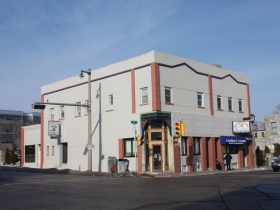
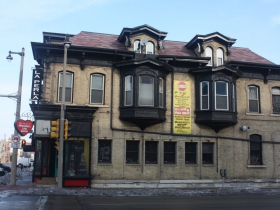
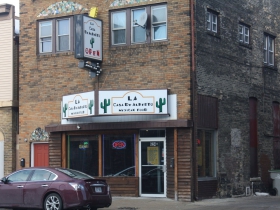
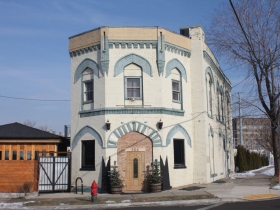
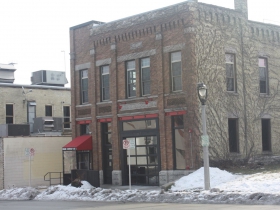
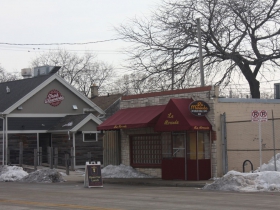




















So when did Muskego get cut off from National Ave?
It did not get cut off, it just had name changes. It went from being Muskego Road to 11th Avenue, to S. 16th Street, and now called S. Cesar E. Chavez Drive.
Thanks for the history lesson. Is there a book on the orginal streets names in Milwaukee and how Milwaukee came to be? Name of the books please. Thank you.
Thanks for the histoty on Milw. I love history,even though I am an old petson. Csme to Milw. in 1969. Please send info on books I can get from the library on Milw. history.
Ruthie Johnson, Carl Baehr wrote “Milwaukee Streets: The Stories Behind Their Names”, Cream City Press, 1995. You can still get it through Amazon.
Ruthie,
The find “how Milwaukee came to be,” John Gurda’s “Making of Milwaukee” is the definitive history of the city. It is available at local libraries.